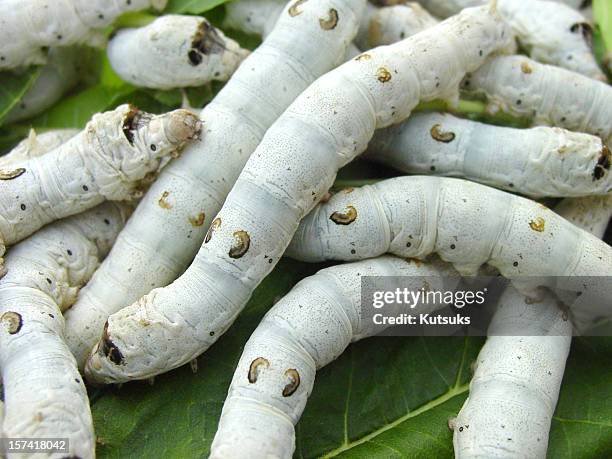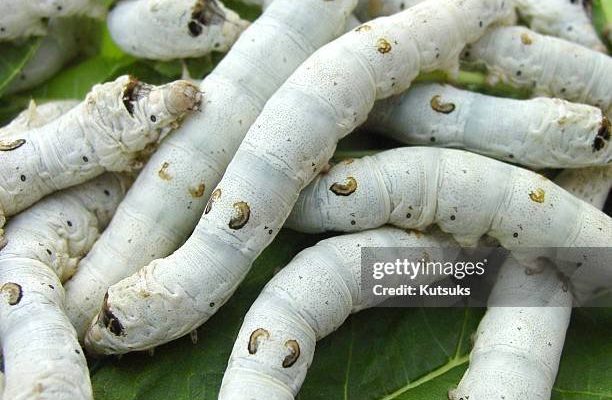
So, what exactly are silkworms? They are the larvae of the silk moth, known scientifically as *Bombyx mori*. These soft-bodied caterpillars have been cultivated for thousands of years, primarily in Asia, to produce silk. In this article, we’ll explore everything there is to know about silkworms—from their biology to their cultural significance. Ready to dive in? Let’s go!
The Life Cycle of Silkworms
Understanding silkworms starts with their life cycle, which is nothing short of remarkable. Silkworms go through four main stages: egg, larva, pupa, and adult moth. Each stage is distinct, and they all contribute to the production of silk.
1. Egg Stage: It all begins when a female silk moth lays about 300 to 500 eggs. These tiny eggs are usually the size of a pinhead and are often laid on mulberry leaves. Within about 10 days, the eggs hatch into larvae.
2. Larva (Caterpillar) Stage: Once hatched, the baby silkworms start eating mulberry leaves. They’ll eat non-stop for about 4 to 6 weeks, growing rapidly. During this time, they’ll molt several times, shedding their skin to accommodate their growing bodies. Picture a teenager outgrowing their clothes every few months!
3. Pupa Stage: After reaching full size, silkworms start preparing for the next phase. They spin a cocoon made from silk threads. This cocoon is a protective case where the larva transforms into a moth. It’s fascinating to think that the silk we wear once formed a safe little house for our squishy friend!
4. Adult Moth Stage: Once the transformation is complete, a silk moth emerges from the cocoon. They are typically white or cream-colored and have a wingspan of about 3 to 4 inches. Unlike most moths, they don’t fly much. Instead, they seek to mate and lay eggs, completing the cycle. Isn’t nature incredible?
How Silkworms Produce Silk
Now that you know about their life cycle, let’s break down how these little guys produce silk. When a silkworm begins to spin its cocoon, it secretes a liquid silk protein from its salivary glands.
1. Silk Production: The silk initially comes out as a liquid but hardens when it contacts air. This is where it gets exciting! A single silkworm can produce a continuous thread of silk that can be over 1,000 meters long. That’s enough silk to make several shirts!
2. Spinning the Cocoon: The silkworm spins its cocoon by moving its head in a figure-eight pattern. This action allows the silk to wrap around itself, creating layers. The spinning can take about two to three days, during which the cocoon becomes firm and protective.
3. Harvesting the Silk: After the silkworm finishes spinning, the cocoons can be gathered. To make them usable for textiles, they’re usually boiled to kill the pupa inside and loosen the silk threads. It’s a process that’s been perfected over centuries and is essential for producing quality silk fabric.
4. Silk Quality: The quality of silk depends on several factors, including the health of the silkworm, the type of mulberry leaves they consume, and even the environmental conditions. So, when you wear that silky dress, know it’s a product of careful cultivation and expertise!
The Importance of Silkworms in Culture
Silkworms are more than just remarkable little creatures; they’ve also played a significant role in various cultures around the world. Their silk has held immense value for centuries.
1. Historical Significance: Historically, silk was a luxury item in ancient civilizations like China. It was so prized that the secret of silk production was kept under wraps for over a thousand years. Those who could afford silk were seen as wealthy and stylish.
2. Cultural Traditions: In many cultures, silkworms symbolize prosperity and good luck. For example, in China, there’s a festival called the “Silk Festival,” celebrating the ancient practice of silk production and its importance to society. Imagine vibrant parades, traditional music, and plenty of food!
3. Economic Impact: Today, silk farming remains an important economic activity in many countries, providing jobs and income for countless families. It’s particularly vital in regions of India and China, where locals engage in sericulture, the raising of silkworms for silk production.
4. Modern Applications: Besides clothing, silk is used in various products, from home furnishings to medical sutures. The versatility of silk showcases the innovative ways humans have utilized this natural resource throughout history.
Common Misconceptions About Silkworms
You might have heard some myths about silkworms, and it’s essential to set the record straight. Here are some common misconceptions.
1. Silkworms are Worms: Contrary to what the name suggests, silkworms aren’t actually worms. They are larvae of a moth species. So, thinking of them as cute, fluffy caterpillars is more accurate!
2. Silk is Harvested Painfully: Some people believe that the process of harvesting silk is cruel to silkworms. While it’s true that the pupa inside the cocoon is killed, many farmers have started using methods that minimize suffering, such as allowing the moth to emerge before collecting the empty cocoons.
3. Silk is Unethical: With the rise of concern for animal rights, many assume that all silk production is unethical. However, there are ethical silk farms that focus on humane practices, such as peace silk. This type of silk allows the moth to live and emerge from its cocoon before harvesting.
4. Silkworms Are Hard to Raise: While silkworm farming does require specific conditions, like humidity and temperature control, it’s not as complicated as many think. In fact, many enthusiasts raise them at home as a fun and educational hobby!
Caring for Silkworms at Home
If you’re interested in silkworms, you might even consider raising them. Here’s how you can get started.
1. Setting Up a Habitat: Silkworms need a clean, well-ventilated space. You can use a box or a terrarium filled with fresh mulberry leaves as their primary food source. It’s like setting up a cozy little café just for them!
2. Feeding Them Right: Fresh mulberry leaves are essential. You’ll want to make sure these leaves are free of pesticides and chemicals. Change the leaves daily to keep your silkworms happy. Trust me, they’ll thank you for it!
3. Monitoring Conditions: Keep an eye on temperature and humidity. Silkworms thrive in warm and humid conditions, so a small heater or a humidifier can help. Just think of it as creating a tropical paradise for your little friends.
4. Harvesting Silk: Once your silkworms reach maturity and spin their cocoons, you can decide whether you want to let them emerge as moths or harvest the silk. Either way, it’s a fascinating experience that’s rewarding and educational.
The Future of Silkworms
As the world moves forward, so does the future of silkworms and silk production. Here’s what we can expect.
1. Sustainable Practices: There’s a growing push for sustainable and ethical silk production methods. As consumers become more conscious, farmers are adapting to meet these new demands.
2. Biotechnology: Scientists are exploring the genetic makeup of silkworms to improve silk quality and production efficiency. Imagine silk that’s even stronger and more versatile!
3. Education and Awareness: With education initiatives, there’s a chance to inform younger generations about the importance of silkworms and sustainable practices, ensuring that these incredible insects are valued.
4. Cultural Preservation: As silk holds cultural significance in many societies, efforts to preserve traditional harvesting and weaving techniques continue. Promoting awareness of these traditions can help keep them alive for future generations.
So there you have it—a complete introduction to silkworms! These remarkable creatures have a story that weaves together biology, culture, and sustainability. Whether you appreciate silk for its beauty or are considering raising silkworms yourself, there’s a lot to love about these little silk-spinning marvels. Life’s full of fascinating connections, and silkworms are just one thread in the rich tapestry of nature.

